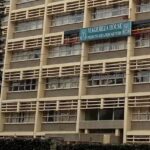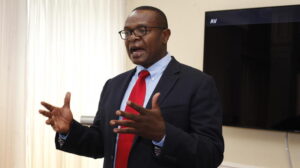A group of concerned activists has filed a lawsuit seeking the removal of Solomon Atsiaya, CEO of the Kenya National Police DT Sacco, on grounds of severe financial misconduct and mismanagement.
Atsiaya stands accused of leading the Sacco into massive financial losses through corruption, manipulation of regulations, and a series of questionable dealings that have sparked outrage among Sacco members and the public.
At the center of the accusations are claims that Atsiaya, with the help of certain board members, has entrenched his control over the Sacco by sidelining and silencing those who dare question his actions.
This alleged stranglehold on power has come at a high cost, with insiders pointing to a lack of transparency and leadership failure during Atsiaya’s tenure.
One of the key developments in the case is the suspension of three elected delegates—Stephen Kiralem, Edmund Bunyasi, and Robert Odongo after what petitioners describe as an unlawful election.
The suspended delegates, who have since turned to the Cooperative Tribunal for legal recourse, were reportedly vocal in their demands for accountability within the Sacco, leading many to believe their suspension was a targeted effort to silence opposition.
The Ethics and Anti-Corruption Commission (EACC) and Cabinet Secretary Wycliffe Oparanya have now been drawn into the case.
Activists are calling on these key players to help expose the full extent of the alleged corruption under Atsiaya’s leadership, which they argue has caused the Sacco irreparable harm.
At the center of the activists’ demands is an audit of the Sacco’s finances, with one major point of contention being the controversial M-TAWI banking system.
Acquired at an exorbitant cost of Ksh 600 million, the system has been a monumental failure according to Sacco insiders, with its annual maintenance fees of Ksh 300 million adding insult to injury.
The petitioners have called for an investigation into how such vast sums were spent on a system that barely functions, with many suspecting that funds were either mismanaged or misappropriated.
The financial mismanagement accusations do not stop with the M-TAWI project.
Other areas of extravagant spending have also surfaced, such as the Sacco’s education and marketing departments.
Sacco members have questioned the legitimacy of some Corporate Social Responsibility (CSR) projects, including the much-criticized Police Sacco Stadium in South C and a gymnasium in Kiganjo.
Activists claim that the funds allocated for these projects have either been squandered or siphoned off for personal gain.
Another troubling allegation concerns favoritism and nepotism within the Sacco.
Atsiaya is accused of enabling the hiring of family members and close associates tied to board members, including the controversial hiring of Timothy Okumu, the brother of Director John Okumu, and Beatrice Owino, allegedly the chairman’s daughter-in-law.
These appointments have drawn sharp criticism, with many calling for a full investigation into the recruitment practices within the Sacco.
The financial impropriety accusations are accompanied by claims of Atsiaya’s extravagant personal lifestyle.
Activists point to his luxury homes and vehicles as evidence that Sacco funds are being diverted for personal use.
They argue that an investigation into Atsiaya’s personal wealth is long overdue, with many suspecting that Sacco resources have been funneled into financing his lavish lifestyle.
One particular case that has raised eyebrows is the expenditure of Ksh 16.9 million for a tree-planting event at the DCI Headquarters last year.
Activists allege that the costs were grossly inflated and are demanding a detailed audit to determine where the CSR funds were actually spent.
This example, along with many others, has fueled demands for accountability and transparency within the Sacco.
The petitioners are now relying on the court to remove Atsiaya from his position and appoint a temporary leader who can restore the Sacco to sound financial management.
The outcome of this high-stakes case has gripped the attention of activists and Sacco members across the country, with many hoping that this lawsuit will bring much-needed change to the institution.
All eyes are on the ruling, which could set a precedent for how financial misconduct in such institutions is handled in the future.





















Add Comment